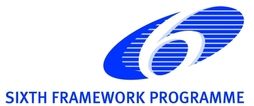HIGHER DIMENSIONAL GENERAL RELATIVITY
In a recent paper P.Bizon and
T.Chmaj (P. Bizon, T. Chmaj, and B.G. Schmidt, Critical Behavior in
Vacuum Gravitational Collapse in 4+1 Dimensions, Phys. Rev. Lett. 95,
071102 (2005)) put forward an idea which opens up new horizons in the
studies of higher dimensional gravity. Namely, they showed that in
five spacetime dimensions one can perform a consistent
cohomogeneity-two symmetry reduction of the vacuum Einstein equations
which - in contrast to the spherically symmetric reduction - admits
time dependent asymptotically flat solutions. This model provides a
simple theoretical setting for studying the dynamics of gravitational
collapse in vacuum, both numerically and analytically. Similar models
can be formulated in higher dimensions as long as the corresponding
sphere admits a non-round homogeneous metric. We plan to investigate
how the dynamics of such models depends on the dimension and the
coset space. In particular we are interested in the role of
self-similar and stationary solutions in singularity formation. We
plan to study qualitatively new phenomena, which appear in higher
dimensions, for example, in nine dimensions where the Hawking mass is
not monotone, suggesting a possibility of violating the weak cosmic
censorship in the evolution of initial data having locally negative
energy density.
Further subtopic concerns Calabi Yau
manifolds, and their recent generalizations, which appear in studies
of string compactifications, where some of their geometrical
properties are related to appropriate low-energy 4D physics. In a
second line of investigation certain Calabi-Yau geometries appear
also in detailed studies of the entropy of certain black holes which
can be calculated both from the gravitational (geometric) point of
view and using a microscopic framework. We are mostly interested in
the complex Monge-Ampere equation, especially on Kähler
manifolds. The main reason why this equation is so important in
geometry is the fact that the Ricci curvature of a given Kähler
metric is given by the Monge-Ampere operator. Therefore many
important problems like solving the Calabi conjecture or finding a
Kähler-Einstein
metric boil down to solving this equation (this was achieved by Yau
in 1978).
GRAVITY AND GAUGE THEORIES – GEOMETRY AND INTEGRABILITY
In a very recent investigation (A. Janik, R.
Peschanski, `Asymptotic perfect fluid dynamics as a consequence of
AdS/CFT', hep-th/0512162), we showed that the properties of a
gauge theory matter system were mapped into geometrical properties of
5 dimensional solutions of Einstein equations on the string/gravity
side. It is extremely interesting to consider various extensions to
other systems with less symmetries, to study the interrelations
between the appearance of horizons on the dual string/gravity side
with properties of the gauge theory matter in such a dynamical
setting. Another problem where geometrical notions appear (now in the
most general sense) is the study of the
AdS5
×S5
superstring on the quantum level. A lot of
evidence has been accumulated that the worldsheet theory is
integrable, i.e. it possesses a symmetry structure most probably of a
Hopf algebra type (Yangians have been argued to play a role here),
and key properties are determined by the solutions of the Yang-Baxter
equation. It is very interesting to examine in detail these
solutions, which are not yet complete, their precise symmetry
structure, as it seems that various features are different from the
ones considered before. Moreover it would be then fascinating to
employ techniques from integrable field theories to study the model
in the fully quantum regime.
EVOLUTION EQUATIONS AND TOPOLOGICAL DEFECTS
The main limitation of the
analytical methods methods proposed in the literature is that they do
not work in the case of global topological defects, where certain
fields (the ones related to massless particles) have 'bad' asymptotic
behaviour in the directions perpendicular to the defect. An elegant
singular perturbation method, based on asymptotic expansion of the
appropriate solutions of the pertinent nonlinear partial differential
equations with respect to extrinsic curvature of the brane, has been
worked out for local topological defects. Our aim is to extend this
method to the global defects. The problem has nontrivial geometrical
part due to generally non-vanishing curvature of the pertinent
branes.
Evolution equations for the p-branes, obtained in the
case of local topological defects, lead to flow equations for the
metric as well as for the extrinsic curvature of the branes. We would
like to investigate properties of such flows, in particular, we would
like to find the relations with the Ricci flow, which has played the
important role in the recent progress on the Poincare conjecture.
NONCOMMUTATIVE GEOMETRY: EQUATIONS OF MOTIONS
Although many examples
noncommutative manifolds have been studied, it was only recently that
significant results concerning their geometry (Dirac operator) were
discovered. Still, we have no knowledge of their Riemannian geometry.
The classical (commutative) objects like Riemann or Ricci curvature
or scalar curvature have yet no precise counterpart in the
noncommutative description. Moreover, the action makes sense only in
the Euclidean framework thus leaving the physically relevant
Lorentzian cases without mathematical model. Finally, even with the
action we still cannot not even pose the equation of motions, which
would replace in the noncommutative setup the Einstein equations. It
is a major task and a big endeavour to cure these problems: first to
make sense of the Lorentzian action and then to construct
noncommutative geometrical objects, which would appear in the
Einstein-type equations of motions. However, the task is not at all
hopeless: due to the detailed construction of spectral geometries for
several noncommutative manifolds, including quantum spheres (with
respective quantum symmetries) and the extension of the constructions
to the case of Lorentzian metrics, we are able to investigate all
details of this particular geometries.

